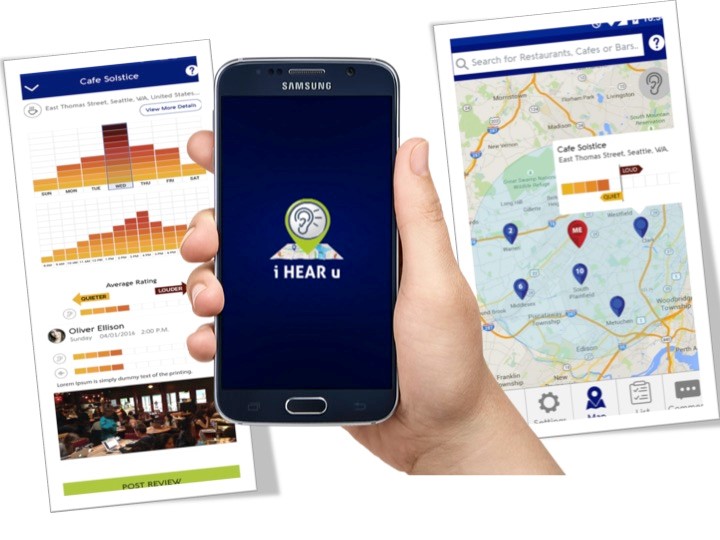Advancing Social Connectedness: Closing Words and New Opportunities
Grand Central Station
Climb aboard as Dr. Kelly Tremblay joins Canadian Audiologist with her column, “Grand Central Station.” At heart Kelly describes herself as a clinician and educator. She remains a passionate Canadian who splits her time between Vancouver and Seattle. Grand Central Station” is aimed at connecting clinicians with science, acknowledging that this is sometimes a two-way return trip. Readers will be invited to submit their questions regarding a research topic/article and these questions will be responded to, based on published research.
This is my final post for “Grand Central Station.” Next up? Samira Anderson PhD will be our conductor moving forward, and she will continue to connect clinicians with science on matters of the brain. After all, the brain is our CPU; the ultimate arrival and departure hub (central station) underlying all lines of communication. It is the centre where intersecting lines of information from our senses merge, and when combined with decision-making and other cognitive processes, meaningful communication and connections can take place.
Over the past year we’ve discussed the importance of getting sound to the brain for many reasons (e.g., to reduce the risk of cognitive decline, to improve hearing health, and to facilitate social connectedness). However, encouraging our patients to stay motivated and make use of sound can be challenging because amplified or electrically converted sound is imperfect. Wearable technology does not compensate for the biological changes that take place as we age (or from periods of deprivation) and does not sufficiently filter out unwanted noise. Thus, relying solely on technology to meet our hearing needs is bound to fall short. For this reason, a classic strategy promoted during auditory rehabilitation is to encourage the use of residual hearing and choose places where there is not a lot of background noise.1 For example, an “anticipatory” communication strategy taught by clinicians and health care professionals is to “anticipate” difficult listening situations and plan ahead. Choose locations that provide hearing assistive technology (e.g., hearing loops) and/or optimal sound levels. With that said, it can be difficult to determine noise levels in advance. Gathering spots, such as restaurants, cafes, movie theatres and places of worship, can be very loud – even for people without hearing loss.2 In their recent study of restaurants, bars and lounges in New York City, Spira-Cohen et al. reported the median and mean LAeq among venues sampled to approximate 92 decibels (dBA).3 What is more, 49% of the venues exceeded the maximum allowable daily noise doses based on National Institute of Occupational Safety and Health (NIOSH). These situations put members of the public at a double disadvantage: First, they are in an environment in which they cannot adequately communicate; and second, they are unknowingly in an acoustic environment that can worsen their hearing.4 Thus, bypassing places that are excessively loud is not only a good communication strategy for people with hearing loss; it is also a good strategy to prevent hearing loss. So, here, in my final Grand Central Station post, I want to leave you with one of my passion projects, a tool that I have been working on to help people make use of sound – as imperfect as it may be – and remain socially connected. It is a free app called iHEARu.

As a child of a father with multiple sclerosis, our family spent a lot of time identifying places that were wheelchair accessible, and it was not an easy feat. Now, thanks to mobile technology and crowdsourcing capabilities, there are ways to find this kind of information and share it with friends and family. The same can now be said for identifying hearing/ear-friendly places. We created a free app that allows people to use GPS to locate sound environments based on user-generated loudness. Through crowdsourcing, information about sound levels, as well as the availability of hearing assistive technology can be shared. It is like “Yelp” for noise ratings and students and audiologists alike have been using the app to record sound levels in different types of establishments. You can also use the app to locate hearing looped facilities as well as share photos and comments about locations that are willing to accommodate your hearing requests.
An additional use of the app is to better inform scientists about the presence and magnitude of noise levels in leisure settings. With the help of colleagues at NIOSH and a recent grant from the National Institutes of Health, we will soon be seeking citizens to collect data about sound levels in various settings. IHEARu’s sound level measurement module was tested/evaluated in collaboration with NIOSH researchers and was found to be in accordance with peer-reviewed literature.4,5
To learn more about becoming a citizen scientist and advocate, see:
https://www.youtube.com/watch?v=zFFhOAOzaPs
https://youtu.be/E9wbjncpTZM
http://ihearu.co/
References
- Canadian Hard of Hearing Association. Living With Hearing Loss. Ottawa: Author. Available at: https://www.chha.ca/hearing-education/living-with-hearing-loss/#Tips.
- Lebo CP. et al. Restaurant noise, hearing loss, and hearing aids. Western J Med 1994;161:45–49.
- Spira-Cohen A, Caffarelli A, and Fung L. Pilot study of patron sound level exposure in loud restaurants, bars, and clubs in New York City. J Occupat Environment Hygiene 2017;14:494–501. doi:10.1080/15459624.2017.1296234.
- Rusnock CF and Bush PM. An evaluation of restaurant noise levels and contributing factors. J Occupat Environment Hygiene 2012;9:D108-113. doi:10.1080/15459624.2012.683716.
- Kardous CA, Shaw PB. Evaluation of smartphone sound measurement applications (apps) using external microphones-A follow-up study. J Acoust Soc Am 2016 Oct;140(4):EL327.
- Kardous CA, Shaw PB. Evaluation of smartphone sound measurement applications. J Acoust Soc Am 2014 Apr;135(4):EL186-92. doi: 10.1121/1.4865269.

